25 Reasons Why you Should go on Safari!
1. Cape Town and Table Mountain, South Africa
A fusion of culture, cuisine and landscapes, there’s nowhere quite like Cape Town, an incredibly beautiful city, crowned by the magnificent backdrop of Table Mountain!
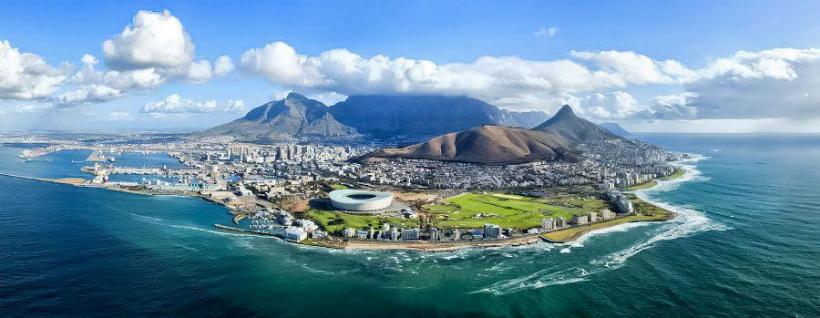
Enjoy a full day tour of the Cape Peninsula, traveling via Chapman’s Peak Drive – and here I must add that the scenery is anytime on par with the beauty of the Italian Amalfi or Adriatic Coastline! Visit the Cape of Good Hope, the most South-Western point of the African Continent and get to view the Cape Penguins at Boulder Bay!
2. Go Wine Tasting in Vineyards more than 350 Years Old!
Experience the Cape Winelands, where you will get to see vineyards that are over 350 years old, do wine tasting at three different wine states in Stellenbosch and Franschhoek, also known as the Food Capital of the world! Besides the great cuisine, allow me to remind you that Napoleon, on his deathbed, insulted the French by asking for a Cape Red!

3. Experience the Magic of the Great Wildebeest Migration!
A photo won't capture the thunder of hooves on dirt as more than a million wildebeest and several hundred thousand zebra make their annual migration, but still, this is one for the top of the pile. The migration is actually a year-round event as the animals move from Tanzania's Ngorongoro Reserve in January, up through the Serengeti around June and hit Kenya's Masai Mara around September, before journeying south again.

4. See the Highest Dunes in the World! - Sosssusvlei, Namibia
Sossusvlei means "the gathering place of water" but
you'll need to bring your own if you don't want to dehydrate
at this, Namibia's most outstanding attraction.
The dunes
have developed over millions of years, the result of
material flowing from the Orange River into the Atlantic,
carried north and returned again to land by the surf.
Climbing the dunes yields breathtaking views, including the
Deadvlei, a ghostly expanse of dried, white clay punctuated
by skeletons of ancient camelthorn trees.

5. Mountain Gorillas, Rwanda
A close encounter with the mountain gorillas of the
Rwandan rainforest will stay with you for a lifetime.
Various operators run tours tracking silverbacks and their
troupes in the dense forest.
At an elevation of more than
6,000 feet, the Nyungwe National Park is an isolated region,
covering more than 386 square miles across southwest Rwanda.
Tourists can meet a vast range of primates and also traverse
East Africa's highest canopy.

6. Do a Houseboat Vacation on the Largest Man Made Lake in the World!
I make no secret of the fact Lake Kariba is one of my all-time favourite destinations. For me the serenity and beauty that is unique to this massive, shimmering water wilderness where elephant and hippo graze peacefully along the shore line never disappoints. Lasting memories are created by the many sights and sounds that typify Lake Kariba - being lulled to sleep by the sound of gently lapping waves, the haunting cry of a fish eagle and the sight of the skeletal trunks and bare branches of a forest of drowned trees silhouetted eerily against a moonlit sky.
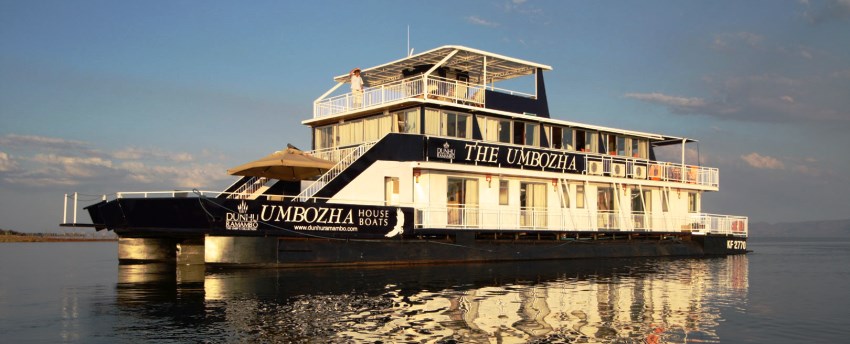
And what's more there are few places that can match the
intensity and unequalled beauty of a classic Kariba sunset
when the lake turns from pink to orange to blood red as the
sun sets slowly behind distant mountains. Lake Kariba can
have an occasional off day when sudden, dramatic and
powerful thunderstorms appear to blow up out of nowhere,
creating driving waves and swells of 3-4m that can result in
the lake being closed to all boat traffic. Combine a
houseboat safari with a luxury safari in Southern Africa,
whether as a romantic getaway, that long last family holiday
or a great time with friends, and have yourself the best
vacation you will EVER enjoy! Houseboats come with a
Captain, two or more room attendants, a chef and tender
boats for game viewing and fishing!
7. Travel to Victoria Falls on the Most Luxurious Train in the World!
This three-night adventure begins with the train’s departure from Rovos Rail Station in Pretoria. It then winds its way north through Warmbaths, so named for its mineral waters, and Nylstroom, christened by the Voortrekkers as the source of the Nile River as the town’s river happened to be north flowing. The train then passes the edge of the escarpment and crosses the Tropic of Capricorn en route to the border with Zimbabwe. After formalities at Beitbridge the next morning, the train travels towards Bulawayo, second city of Zimbabwe, capital of Matabeleland and industrial capital of the country.

The following day sees the train travelling along one of the world’s longest stretches of straight railway line – 114 kilometers – before traversing Hwange National Park, a rich and diverse wildlife sanctuary where animals can be spotted from the train and a game drive excursion is enjoyed. After a service stop at Thompsons Junction, the sojourn ends at the incomparable Victoria Falls on the mighty Zambezi River. Victoria Falls - the world's largest waterfalls and one of the seven natural wonders of the world, located in Southern Africa. One of the world's most majestic water spectacles, Victoria Falls (also called Mosi-oa-Tunya, or "The Cloud That Thunders) -- were reportedly first seen by a European when Scotsman David Livingstone journeyed here in 1855. Since then thousands have enjoyed the spray from the 108-meter high cascade, which was once recorded flowing at 12,800 cubic meters per second -- double that of Niagara's highest flow.

8. Sleep the Safety of a Tree House with Lions Roaring through the Night!
The Doves Nest provides you with a romantic African
fairytale setting, where you can sleep out in the vast
openness of the wild and immerse yourself in the sights and
sounds of the bush that surround you. There is something
quite special about the wide expanse of the African sky and
with just the stars, moon and occasional call from the wild,
to keep you company, you are in for a treat for your sleep
out at The Hide.
The Dove’s Nest is built to
accommodate two people and the spacious and comfortable
bedroom is reached by a wooden stairway which has a
closeable door and is protected by large canvas gauze
windows. Your guide will arrive in the early morning and
drive you back to camp for breakfast where we look forward
to hearing about your adventurous night in the bush.

10. See the Desert Adapted Elephants, Lions and Giraffes Namibia!
Namibia's deserts are so fascinating that another attraction deserves mention in this list. The Spitzkoppe is a grouping of granite peaks in Namibia's Namib Desert, with the highest peak hitting nearly 1,800 meters (about 5,900 feet). This place is heaven for climbers, geologists, stargazers and watchers of weaver birds.

11. The Makgadikgadi Pans, Botswana
It's said you can hear your own blood flow in this vast area of dried-up salt pans in the Kalahari Desert, a forbidding landscape formed by a huge lake that dried up millennia ago. But it can transform in an instant during winter, if rains have been good enough to make lush grass sprout, bringing a stampede of wildlife to break the silence, including zebra, wildebeest and flamingos.
12. Riding Safari, Kenya
The best way to experience Kenya's zebras? From the back of a horse. Travelers can gallop alongside the stripey beasts in the Masai Mara, covering up to 100 kilometers (62 miles) in a week.
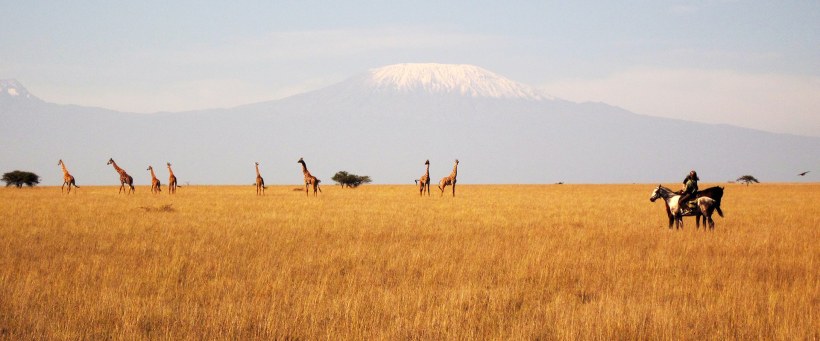
13. Flamingos, Kenya
Lake Nakuru National Park is home to 1 million resident flamingos, providing one of Kenya's most unforgettable sights. This lake has become famous for the greatest bird spectacle in the world, with swathes of vibrant pink filling the alkaline lake and the huge sky.
14. Lower Zambezi, Zambia
Ernest Hemingway would have loved this! Canoeing safaris in the Lower Zambezi offer sightings of hippos, elephants and other animals drinking from the rivers and tributaries around camp. People who love to fish can also be accommodated at various of the camps and lodges on the banks of the river.
15. Bazaruto Archipelago, Mozambique
The 10-minute helicopter ride across the Bazaruto Archipelago to the Azura Retreats lodge on Benguerra Island is worth it in its own right. The destination is the icing on the cake. This award-winning boutique hotel set on a remote desert island is set within a Marine National Park, giving the chance to see whales, dolphins and dugong.

16. Nxai Pan National Park, Botswana
The Baines baobabs that sit close to the entrance of Botswana's Nxai Pan National Park take their name from a series of watercolors by Victorian explorer and artist Thomas Baines. Their fruit apparently tastes a little like sherbet. The Nxai Pan park is great for viewing the vast, salt-rich pans that characterize the Kalahari and is also known for lion, leopard and cheetah and unusually large herds of giraffe.

17. Fish River Canyon, Namibia
Namibia's Fish River Canyon is second only to the Grand Canyon in size. Namibia is the travel gift that keeps on giving. Some 500 meters (1,640 feet) deep and more than 160 kilometers (100 miles) long, this great rift is second only to the United States' Grand Canyon in size, and during the dry season is characterized by beautiful turquoise pools of seasonally flowing water stretching into the distance.
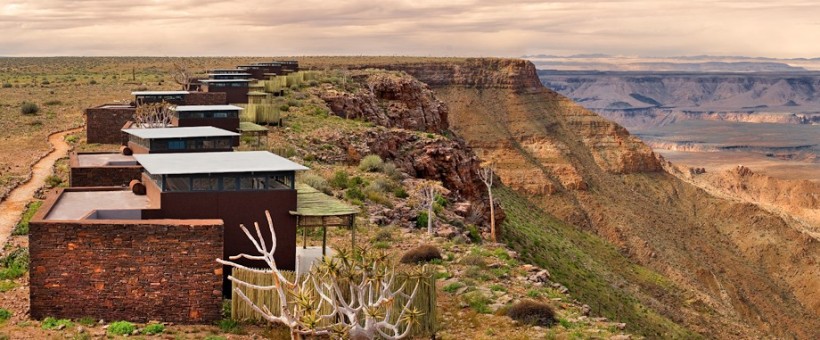
18. Rhinos at Solio Lodge, Kenya (The Safari Collection)
Solio Lodge is located on a private wildlife sanctuary, tucked in the valley between the lofty slopes of Mount Kenya and the peaks of the Aberdare Mountains, directly north of Nairobi. This intimate and luxurious lodge opened in August 2010 and remains the only guest accommodation on the incredible 45,000-acre Solio Game Reserve.
The Solio Reserve is internationally recognised as the most successful private rhino breeding reserve in Kenya and visitors will find that sightings of up to 40 rhinoceros at a time are not uncommon! The wildlife experience here is intense and exclusive with 19,000 acres of conservancy surrounded by 45,000 acres of ranch and just one lodge, Solio Lodge, in the middle of it.
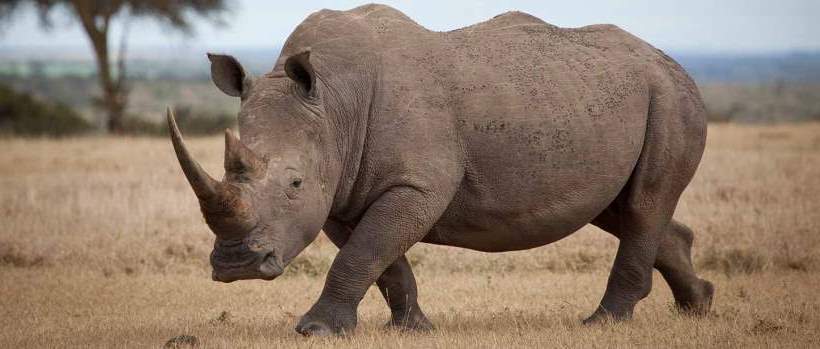
19. Mount Kilimanjaro, at 5,895 meters (19,341 feet), Africa's highest Peak
Indeed an item on thousands of bucket lists. Mount Kilimanjaro, the "Mountain of Greatness", is the tallest freestanding mountain in the world. While you may have your own reason for wanting to climb Kilimanjaro, one thing is common amongst all those who visit - the desire to stand on the highest peak of Africa. Climbing Kilimanjaro is a demanding, challenging feat. But despite the immense height, Mount Kilimanjaro can be successfully climbed by any reasonably fit person. No technical skills are necessary, making Kilimanjaro the highest, most accessible, "walkable" mountain on the planet. Mount Kilimanjaro draws over 25,000 visitors annually. Nearly 50% of all climbers fail to reach the summit. To succeed on the mountain, it is imperative that climbers are guided by an experienced outfitter, with proven competence, reliability and safety. We have partnered with the top Kilimanjaro operator to offer the best guide services to adventurers from around the world.
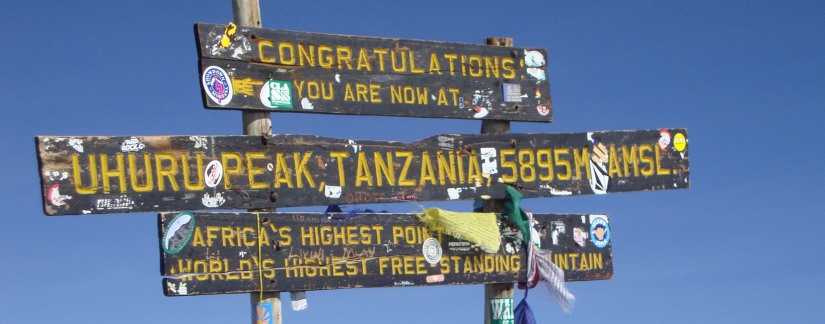
20. The Okavango Delta, Botswana
Described as "the river which never finds the sea", the Okavango River in northwestern Botswana disappears into a 6,000-square-mile maze of lagoons, channels, and islands. The Okavango Delta is a spectacular site either in flood or at other times of the year. Teeming with wildlife and over 400 bird species, a visit to Botswana's Delta is an experience of a lifetime.
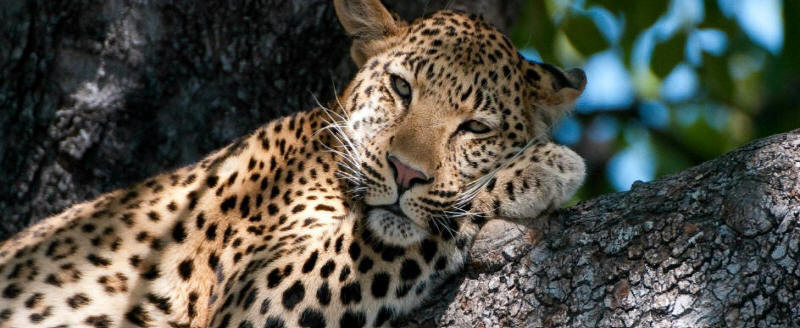
The Okavango Delta in Botswana
is the largest inland Delta in the world. It's made up of an
intricate network of channels and lagoons, and one of
Africa’s vast unspoilt and pristine wilderness areas teeming
with wildlife. The Okavango Delta is fascinating. In a
country which is 80% arid, the Delta is a permanent life
giving waterway. An essential understanding when planning
your Okavango Safari is that it is a highly dynamic
environment, which changes from year to year and even from
month to month.
21. Unforgettable Etosha!
“Etosha National Park, covering more than 20,000 sq km, is one of the world’s great wildlife-viewing venues. Unlike other parks in Africa, where you can spend days looking for animals, Etosha’s charm lies in its ability to bring the animals to you. Just park your car next to one of the many water holes, then wait and watch while a host of animals – lions, elephants, springboks, gemsboks etc – come not two by two but by the hundreds.
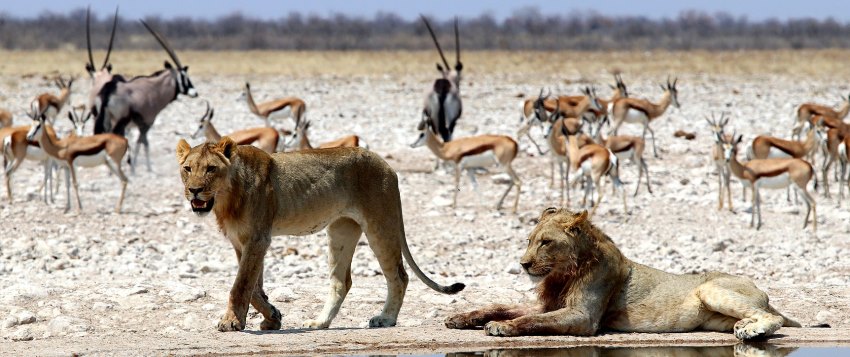
Etosha's essence is the vast
Etosha Pan, an immense, flat, saline desert that, for a few
days each year, is converted by rain into a shallow lagoon
teeming with flamingos and pelicans. In contrast, late in
the dry season, everything, from the elephants to the
once-golden grasslands, seems cast, specterelike, in
Etosha’s white chalky dust. And what wildlife there is! Even
if you’ve had a taste of African wildlife watching
previously, you are likely to be mesmerized by it here” –
Lonely Planet.
22. Experience Tswalu Kalahari Reserve – The Largest Privately Owned Game Reserve in the World!
Tswalu Kalahari is South Africa’s largest private game reserve, covering an area of over 100,000 hectares. Owned by the Oppenheimer family, Tswalu takes conservation as its absolute priority; our vision is simply ‘to restore the Kalahari to itself’. No more than thirty guests at a time can discover the beauty of this landscape, its diverse wildlife, and the serenity of what may well be South Africa’s last great wilderness.
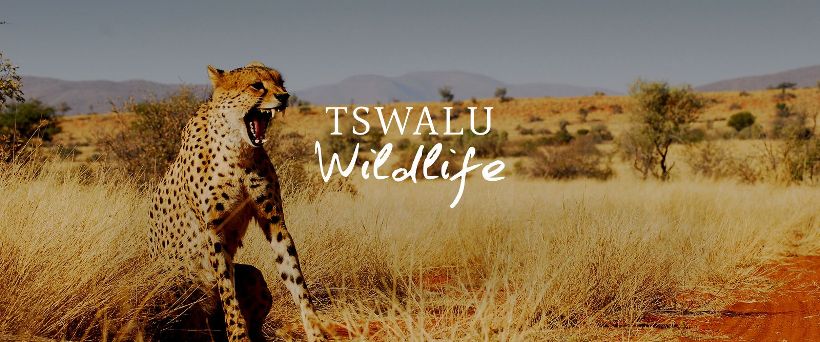
Tswalu Kalahari
Reserve is an exclusive, luxury, private, malaria-free game
reserve situated in the heart of South Africa's Northern
Cape Province. The Reserve offers the ultimate safari
experience and the surroundings are elegantly simple, with
its luxury swimming pool opening to the remarkable scene of
animals drinking at a nearby watering hole. A trip to Tswalu
Kalahari Reserve is unique in many ways, offering an
exclusive, tailor-made experience. The Reserve is situated
at the foot of the Korannaberg Mountains, some 300
kilometers north west of Kimberley.

23. Lake Malawi, Malawi
Lake Malawi, one of the largest lakes in the world, was dubbed "Lake of Stars" by Dr. David Livingstone, who trekked here a century and a half ago. The lake has more tropical fish than any lake in the world -- 1,300 species -- and the freshwater diving is great. The biodiversity has been recognized by UNESCO, which has made Lake Malawi National Park, the world's first freshwater park, a World Heritage Site.
24. Experience the Magical Game Viewing of Greater Kruger Park!
The Greater Kruger National Park (GKNP) refers to the over twenty private reserves to the west of the Kruger National Park (KNP) which add 180 000 hectares to the reserve. In total, the whole area covers 20 000 000 hectares of unfenced, wild reserve with free movement of animals across this spectacular land.

So what's the
difference between the GKNP and the KNP experience when
going on a Kruger National Park safari?
Highlights of GKNP
+++ Limited numbers of people are allowed in the area,
providing a far less crowded safari experience and giving
the visitor the feel of true Africa, unspoiled by too many
cars and people.
+++ With the borders between the Kruger
National Park and the GKNP being unfenced, there is free
movement of all game, allowing sightings of a huge variety
of animals
+++ GKNP is next door to the Kruger Park: day
trips into the park are easy, giving you the best of both
worlds
+++ Walking safaris, game-viewing in safari
vehicles and night drives are offered with knowledgeable
guides
+++ Accommodation in the GKNP is more exclusive,
with smaller camps, great service, and more luxurious
amenities
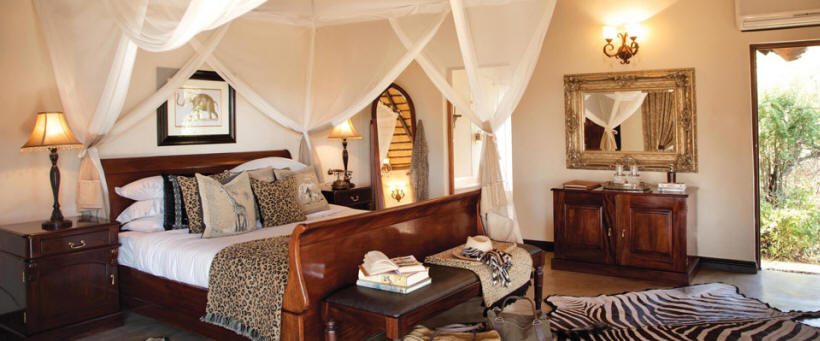
25. Mana, Oh Mana!!
Situated in the northern region of Zimbabwe, on the
southern banks of the Zambezi River, Mana Pools National
Park will leave you breathless with its beauty. A paradise
for walking and canoeing safaris, Mana Pools is a
wildlife-rich, biodiverse wonderland that will delight at
every turn.
You can expect to spot hippopotamus,
crocodile, elephants and a wonderful array of aquatic birds
within this UNESCO World Heritage Site, and there’s a good
chance of seeing lioness’ hunting around waterholes, where
prey are seemingly easy pickings.
The landscapes are beautiful too, dotted with acacia trees, whose shade becomes vital to the parks’ more than 12,000-strong elephant population in the dry season, as well as a sprinkling of vibrant plant life. Far away from any human settlement, you’ll relish the feeling of remoteness here. Surrounded only by extreme wilderness, and if you visit in winter, you’ll find yourself exploring amongst the highest concentration of wildlife in Africa. An experience for which words can do no justice. – Beks Ndlovu, African Bush Camps
LAST BUT NOT THE LEAST! - Direct Flights from Newark to Cape Town and Dulles to Johannesburg!
How convenient is this!? Direct flights with United Air between Newark and Cape Town starting December 2019, to complement the existing direct flights from either JFK or from Washington Dulles to Johannesburg!
So... Considering all the above reasons, stop procrastinating! - Let’s Go on Safari!